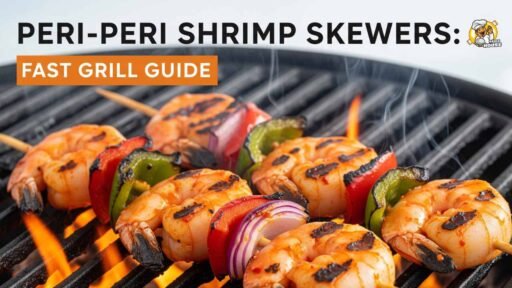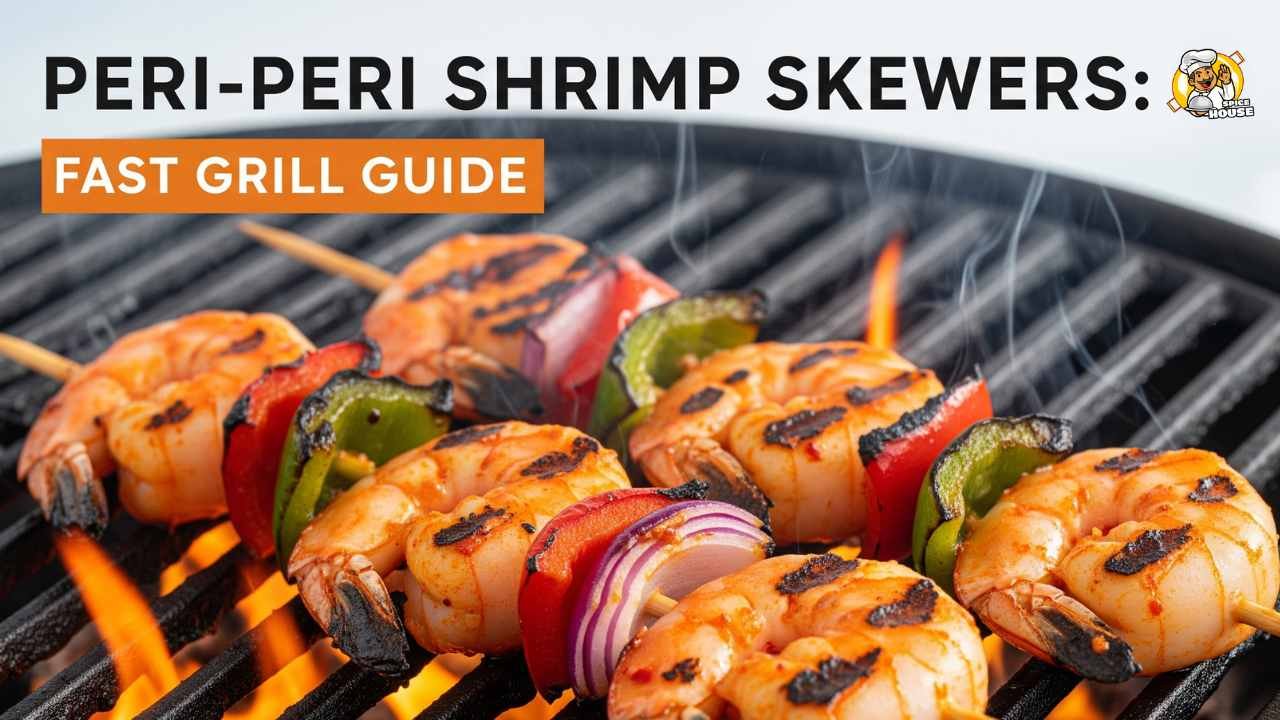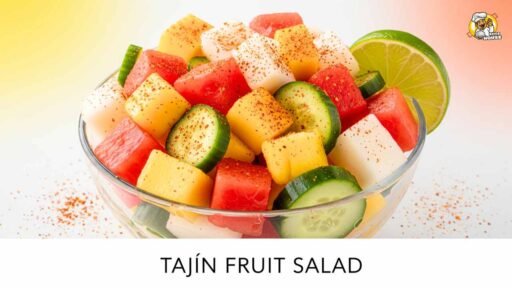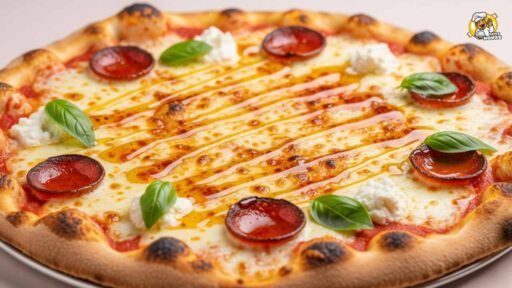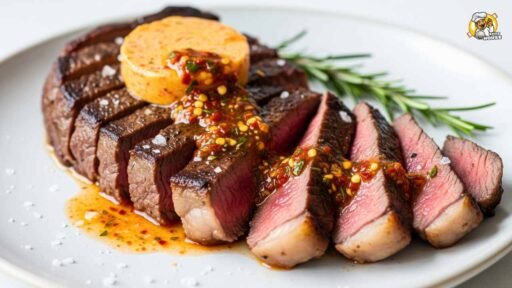Four out of five U.S. households now own a grill or smoker, according to the Hearth, Patio & Barbecue Association. Shrimp is America’s most‑consumed seafood by volume, NOAA Fisheries reports. Put those two facts together and you get a simple takeaway: fire‑cooked seafood is no longer a niche—it’s your neighbor’s Tuesday night dinner. The twist is peri‑peri, the bright, citrusy chile from Southern Africa that’s jumping from restaurant menus into the mainstream grocery aisle.
Here’s the thing: the peri‑peri boom brings real tension. Authenticity vs. mass‑market shortcuts. Farmed shrimp supply vs. sustainability promises. Spice‑aisle darlings vs. independent sauce makers. It affects home cooks who want real flavor fast, investors watching hot‑sauce and seasoning growth, and employees across the seafood and spice supply chains who feel every surge and slowdown. While Nando’s popularized peri‑peri globally and McCormick sets the tone for what flavors scale at retail, the backyard is where this story meets a hot grate—and where a perfectly cooked skewer can speak louder than a marketing deck.
The Data:
-
According to NOAA Fisheries, shrimp remains the top U.S. seafood by consumption, at roughly 6 pounds per capita in recent years. That’s ahead of salmon and tuna, and it’s trending steady-to-up as at‑home cooking rebounds.
-
The Hearth, Patio & Barbecue Association says about 80% of U.S. households own a grill or smoker. Gas and charcoal dominate, but pellet growth keeps nibbling market share, which matters for quick, high‑heat seafood cooks.
-
Grand View Research pegs the global hot sauce market at roughly $3 billion and projects mid‑single‑digit to high‑single‑digit annual growth through 2030. McCormick’s annual Flavor Forecast also calls out “chiles in every form” as a persistent consumer craving—peri‑peri included.
Peri-Peri Shrimp Skewers: Fast Grill Guide: Step By Step Guides
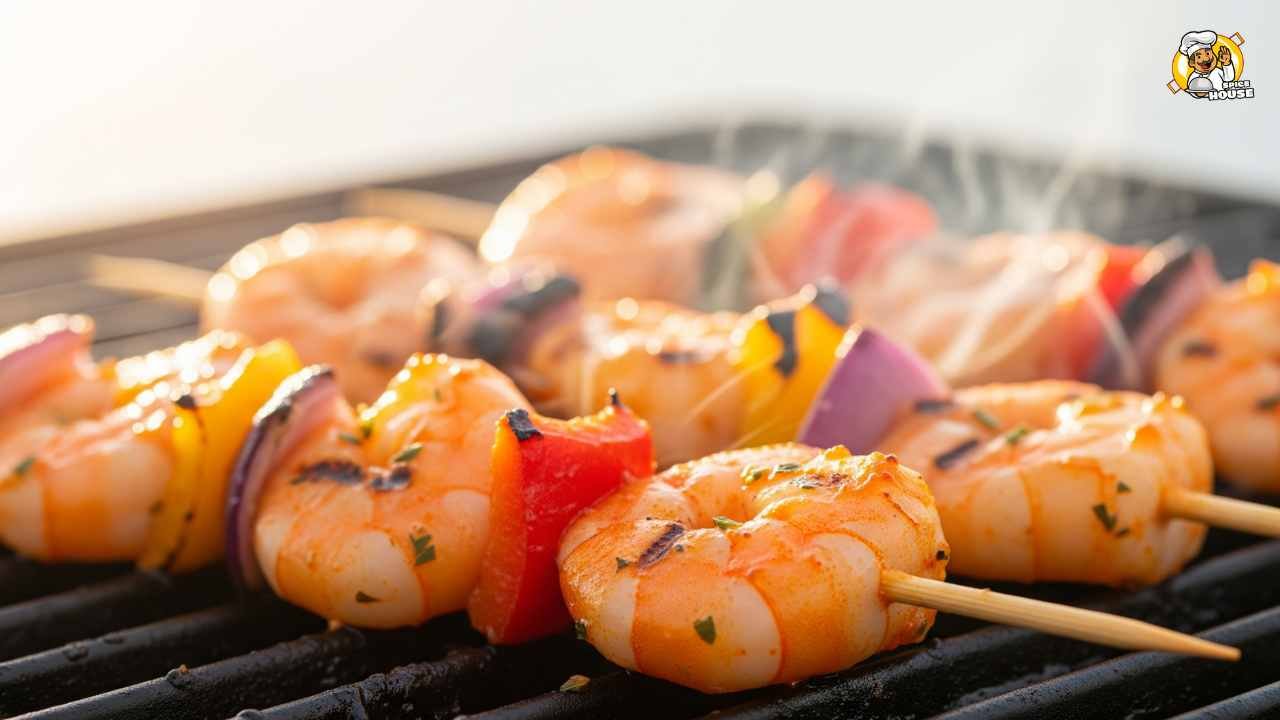
Step 1: Shop smart, thaw right, set up to move fast
Speed is the entire point of grilled shrimp. But speed without planning leads to rubbery seafood and scorched sauce. Start with size. Buy 16/20 or 21/25 count shrimp (that’s how many make a pound). They’re big enough to stay juicy over high heat but small enough to cook in minutes. Fresh is great; high‑quality frozen is often better because it’s blast‑frozen on the boat. If using frozen, thaw overnight in the fridge in a colander set over a bowl. In a pinch, place the bag in cold water for 20-30 minutes, changing the water once.
Pick shell‑on if you want extra protection from heat and a little built‑in flavor. For skewers, I prefer peeled and deveined with tails on. They skewer evenly and eat cleanly. If cleaning at home, a quick slit along the back with a paring knife is enough to remove the vein. Pat the shrimp very dry with paper towels. Moisture is the enemy of sear.
While the shrimp chill, set your gear. If using bamboo skewers, soak them in warm water for 20 minutes to reduce scorching. Metal skewers skip the soak and conduct heat for a touch of inside‑out cooking. Preheat your grill to medium‑high (about 450–500°F). If you can, set a two‑zone fire: one side ripping hot for sear, one cooler for control. Clean and oil the grates just before you cook. A folded paper towel dipped in high‑smoke‑point oil (canola, grapeseed) and held with tongs will do. You’ll also want a small heatproof brush for glazing and a tray for the finished skewers. Mise en place makes a fast cook enjoyable.
Step 2: Mix a true peri‑peri and quick‑brine the shrimp
Peri‑peri is more than heat. It’s zest, garlic, smoke, and bite. You can buy Nando’s bottled sauce (plenty good for weeknights) or make a fresh, fast version that clings to shrimp. Here’s a simple, balanced base for about 1½ pounds of shrimp:
-
6–8 red bird’s eye chiles (or substitute red Thai chiles; for milder heat, use 1–2 Fresno chiles plus ½ teaspoon crushed red pepper)
-
3 cloves of garlic
-
1 small roasted red pepper (from a jar works)
-
Zest and juice of 1 lemon
-
2 tablespoons red wine vinegar
-
1 teaspoon smoked paprika
-
½ teaspoon sweet paprika
-
1 teaspoon honey (optional)
-
¼ cup extra‑virgin olive oil
-
¾ teaspoon kosher salt, plus more to taste
Blend everything until smooth. Taste for balance: you want bright acidity, a slow chile bloom, and a little smoke. Now split the sauce. Pour half into a bowl for basting and serving. Please keep it clean and separate. To the other half, add ½ teaspoon kosher salt and ¼ teaspoon baking soda. That small baking soda bump raises the pH on the shrimp’s surface. It helps them brown and keeps the texture snappy. It’s a trick many test kitchens have championed for years.
Toss the dry shrimp in the marinade‑brine and coat well. Rest 10–20 minutes in the fridge. Don’t go long here—acid will “cook” the shrimp if you forget them for an hour. One more safety note: any marinade that has touched raw shrimp must be used only for raw contact and then discarded or boiled. That’s why we split the batch. You’ll thank yourself when you brush on that clean, bright peri‑peri glaze at the grill.
Step 3: Skewer, season, and build a better fire
Skewers keep shrimp from falling through the grates and make flipping a one‑and‑done move. Thread each shrimp through two parallel skewers, forming a gentle “C” shape. Two skewers prevent spinning and promote even cooking. Fill each set with 6–8 shrimp, leaving a little space between pieces to avoid steaming. Lightly oil the outside surface and dust with a pinch of kosher salt. The marinade brings salt, but an extra whisper of surface seasoning matters.
Gas grill: Preheat to medium‑high with the lid down for 10–15 minutes. Clean and oil the grates. Set one burner to low for your cooler zone. Charcoal: Build a two‑zone fire. Bank hot coals on one side, leave the other side sparse. Pellet: Set to 500°F and preheat the hottest side of your grate. If you have a cast‑iron plancha, it can help with even searing.
Add a small chunk of citrus wood or apple to charcoal for a subtle smoky note that complements peri‑peri’s brightness. Keep airflow steady; you want heat, not flare‑ups. Have a safe zone ready. Shrimp goes from glossy to opaque in what feels like seconds. That’s the goal. For indoor cooks, a ripping hot cast‑iron skillet or a preheated broiler 6 inches from the element mimics the grill. You’ll lose a bit of smoke, but you’ll gain control. Either way, get your glaze and brush ready, plus tongs and a clean tray for the cooked skewers.
Step 4: Sear, glaze, and don’t overcook—ever
Place the skewers over direct heat, angled across the grates to build grill marks. Close the lid. Cook for 1½–2 minutes, then peek. When the underside turns pink and has early char, flip. Brush the top with the clean peri‑peri glaze. Cook another 1½–2 minutes. Flip once more for a fast kiss—30 to 60 seconds—only if you want deeper color. Total time is usually 4–5 minutes for 16/20 shrimp, 3–4 minutes for 21/25. High heat, short cook. If fat drips from the marinade and flares, slide the skewers to the cooler side. The sugar from honey (if used) caramelizes fast; watch it.
How do you know you’re done? The flesh turns opaque and lightly firm, with a “C” curve—not a tight “O,” which means overcooked. If you use an instant‑read thermometer, pull at 125–130°F. Residual heat will carry the shrimp a few degrees higher. FDA guidance says cook seafood until opaque; you don’t need to chase a high number. Overcooked shrimp bounce like pencil erasers. That’s not tonight.
Brush with a touch more glaze off the heat, then rest the skewers for one minute. Resting lets juices settle and stops carryover. Sprinkle flaky salt and a squeeze of lemon. If you broil or use a pan indoors, follow the same timing cues and glaze at the turn. A cast‑iron sear gives you an edge in browning even without grates. Try not to crowd the pan. Steam is your enemy.
Step 5: Serve bright, add crunch, riff often
Peri‑peri shines when you balance it. Pair the skewers with a cool, crunchy slaw—shredded cabbage, cilantro, and a lemon‑yogurt dressing. Or spoon the shrimp over herbed couscous with cucumbers and mint. Charred corn on the cob with a dusting of smoked paprika? That’s a winner. Warm flatbreads turn it into handheld food. A drizzle of garlic‑lemon butter, used sparingly, adds gloss and rounds the heat.
For variations, swap lemon for lime and add a touch of orange zest for a sweeter citrus profile. Stir chopped fresh oregano into the glaze for a Mediterranean nudge. Want more depth? Blend a roasted serrano and a teaspoon of tomato paste into the base, then thin with water to keep it brushable. No shrimp tonight? Make peri‑peri skewers with scallops, halloumi, or thick mushroom caps. Halloumi loves high heat and takes on grill marks like a champ. For a light dinner, grill zucchini and cherry tomatoes on side skewers and brush them with the glaze in the last minute.
Leftovers keep in the fridge for a day and make a great lunchtime salad. Don’t reheat hard; toss cold with greens, avocado, and a squeeze of lemon. Batch cooking? Mix the marinade in the morning, skewer after work, and you’re eating in under 15 minutes. The hardest step is stopping at two skewers. Six skewers feed 4–5 people, unless your table is extra hungry. On a weeknight, this is as close to cheat‑code cooking as it gets.
The People
Peri‑peri’s rise didn’t happen by accident. Nando’s introduced millions to the flavor profile, then bottled it for home kitchens. Spice firms followed. “Peri‑peri isn’t just heat; it’s the kind of heat that wakes up citrus and smoke,” says a culinary director for a national grocer who helps select seasonal sauce assortments. “When shoppers find a sauce that does both in under 10 minutes, they come back.”
Insiders also see a shift in how home cooks think about shrimp. “Five years ago, we sold far more pre‑cooked shrimp,” notes a mid‑Atlantic seafood buyer at a regional chain. “Now raw counts are up because people got comfortable with the grill. Two minutes per side feels doable.” A Gulf processor echoed the demand swing: “Retailers want consistent 16/20s, peeled and deveined, IQF. It’s about convenience without giving up texture.”
There’s friction, too. A former category manager told me, “Everyone slaps ‘peri‑peri’ on a label, but look at the ingredient deck. If sugar leads and the only chile is generic ‘red pepper,’ that’s not the same thing. Consumers figure it out.” Sources say some big‑box resets this fall will expand the “global chile” shelf while trimming slow‑moving BBQ sauces. Grill brands are listening as well. “Quick, high‑heat cooking is the use case we design around now,” a product lead at a major grill maker said. “Two‑zone control and grate engineering sound boring, but they make shrimp night a success.”
The Fallout
If peri‑peri keeps shifting from restaurant treat to weeknight ritual, winners and losers emerge fast. For McCormick and its peers, the upside is obvious: a hot, repeatable flavor that plugs into existing brands, from spice blends to shelf‑stable sauces. Expect more peri‑peri pantry skews and cross‑merchandising with seafood in the cold case. Private label will follow; it already is. That undercuts boutique makers unless they push into premium ingredients or hyper‑regional takes.
For Nando’s, the more people learn the flavor at home, the more brand equity rises—until mass retail versions diverge too far. The company will need to keep framing “real peri‑peri” around provenance, chile type, and freshness to protect the halo. A broader peri‑peri vocabulary could also spark spats over authenticity. That debate plays out in court sometimes, but far more often it plays out in the cart. Shoppers reward flavor that delivers, even if the backstory is messy.
Seafood supply isn’t a footnote. Shrimp demand has whipsawed with imports from India, Ecuador, and Indonesia. Price relief in the freezer case can swing dollar sales more than any TV ad. Analysts now predict that value‑priced, cleaned raw shrimp will be the volume driver through the holidays, while premium specialty counts ebb and flow with promotions. If grilling remains the go‑to use, processors that can keep consistent sizing and texture win shelf space.
On the grill side, pellets keep gaining share, but gas retains the crown. Either way, the two‑zone story matters. When the dominant use case is a 5‑minute protein, features that make that cook idiot‑proof are no longer niche. That means greats that don’t stick, better low‑end control, and accessories like flat‑top inserts. Look for bundles: a bottle of peri‑peri, a pack of 21/25 shrimp, and a value‑priced two‑skewer set. It sounds small, but it moves units—and it makes a new habit stick.
For employees across the chain, quick‑turn categories can be a blessing and a headache. Seafood counter teams must field questions about thawing, sizing, and deveining. Buyers juggle price volatility and quality claims. Factory line workers adjust to more value‑added packs—marinated shrimp kits are coming back, for better or worse. And if “chiles in every form” keeps compounding, chile processors and growers in Southern Africa and beyond will feel the pull. There’s a case for retailers to invest in origin transparency, even if it complicates the shelf tag. This smells like a long game, not a seasonal spike.
The real wildcard? Authenticity fatigue. Consumers are savvy. They’ll sniff out shortcuts and reward brands that keep peri‑peri honest: real bird’s eye heat, bright acid, and minimal sugar. If big brands lean too hard into sweet, you’ll see a craft rebound online, even as mass moves cases in‑store. A split market is fine. Grills can cook both.
Closing Thought
Peri‑peri shrimp skewers take five minutes on the fire and create a flavor memory that lingers. The only question is which player will own that habit: the restaurant that popularized it, the spice giant that can scale it, or the home cooks who make it their Tuesday night staple. If the backyard becomes the next battleground for global heat, will Nando’s and McCormick spark the category—or will shoppers push the hottest brands off their own grill grates?

